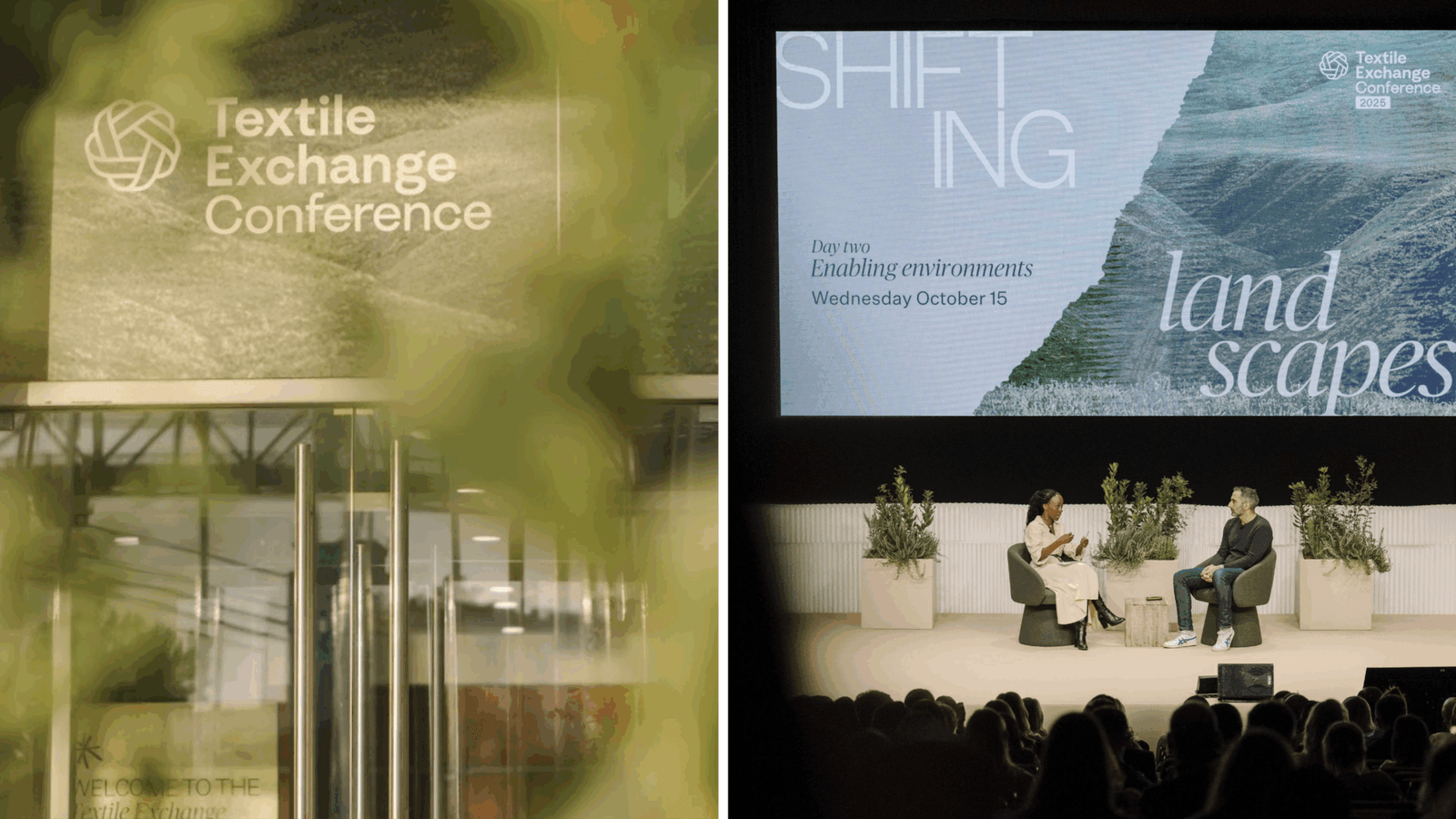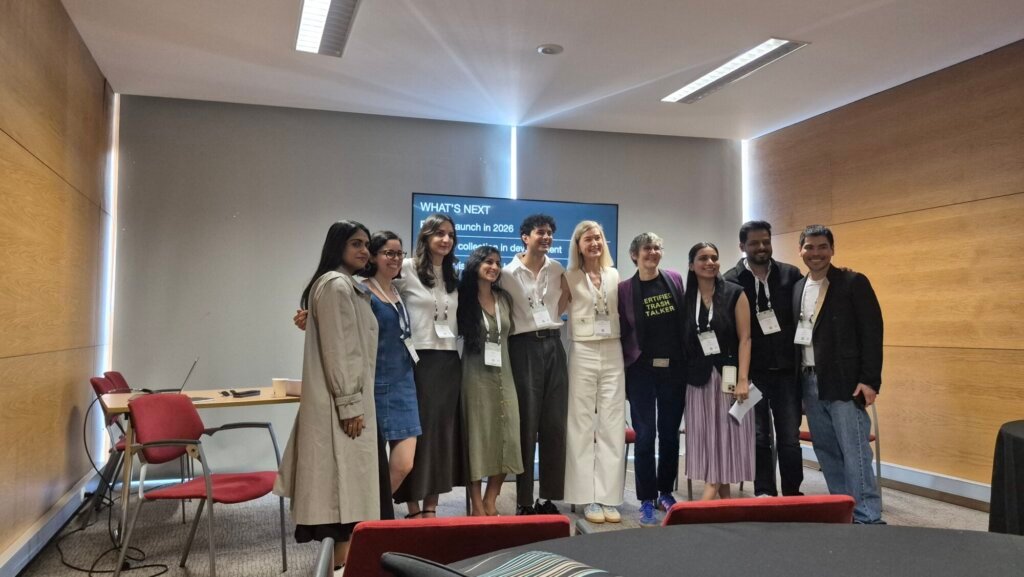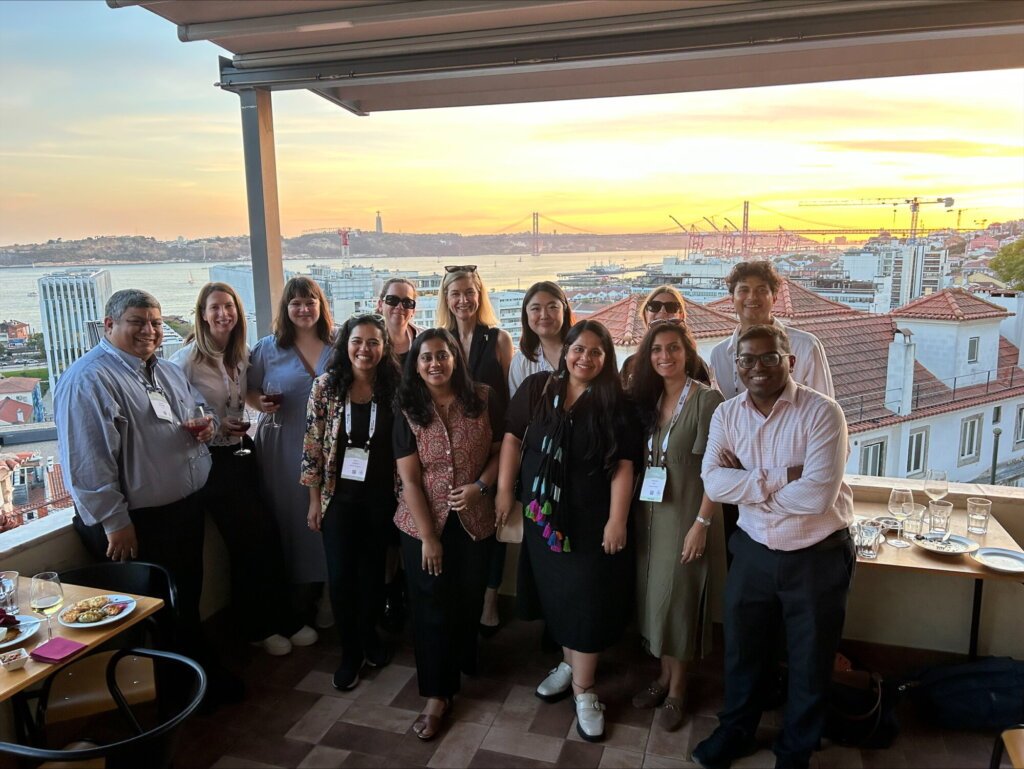
From Convincing to Creating
The mood throughout the conference was urgent yet hopeful. As Inna Kitaychik described it, the subtext has shifted from “What should we do to fix the problem?” to “Who is my partner to implement my solution?” This represents a fundamental transformation in how the industry approaches sustainability where it’s no longer about making the business case but about finding the right collaborators to bring solutions to life.
What struck me most wasn’t just the sessions or the data, though both were compelling. It was the quality of conversations that emerged when people came together with shared purpose. Over the evening reception, I had the opportunity to connect with Rachel Kolbe Semhoun and Chris Gaffney, and our discussions about a future of fashion aligned with nature left me energized about the possibilities ahead. Rachel’s leadership at Kering on landscape-level collaborations stood out as a powerful example of what meaningful progress looks like. A wonderful conversation with Payal Luthra of WWF turned minutes into hours as we explored what it truly means to steward a world where nature and fashion coexist regeneratively.
Breakthrough Innovations Take Root
Another conference highlight was the launch of Project Latvus, an initiative that demonstrates exactly the kind of systems-level thinking our industry needs. This project session, moderated by Karan Kumar of Laudes Foundation, brought together Nicole Rycroft of the Canopy Planet team alongside Maud Diesen Fruend from Chempolis, Ravinder Tuteja from H&M group, and Shivani Gupta from Textile Genesis. The project shows how wheat straw from India, an agricultural residue often burned in fields, can be transformed into high-quality textile fibers using innovative biorefining technology. It’s a powerful example of turning a pollution problem into a regenerative solution while preserving forests and supporting rural livelihoods.

Partners in Transformation
The conference also provided a wonderful opportunity to connect in person with our partners on the Nature of Fashion project: Karan Kumar and Lakshmi Poti from Laudes Foundation; the inspiring team from The Or Foundation including Liz Ricketts, Mary Sarkodie, and Neesha-Ann Longdon; and the brilliant collaborators from Circle Economy, Hilde van Duijn and Tanvi Mohan. There’s something irreplaceable about being in the same room with people who share your commitment.

The Power of Community
A heartfelt thank you to the Textile Exchange team for creating such a warm, well-organized gathering. Sophie, Tilly, Ricardo, Raiza, and Rita, you made the complex logistics feel effortless and ensured that every attendee felt welcomed into this community of practice. As many others have shared in their reflections, the true value of these conferences lies in bringing people together in ways that amplify and intensify the connection and positive energy that enables our collective impact.
Understanding the Urgency
The conference’s theme, “Shifting Landscapes,” resonated throughout the three days. The opening plenary data was sobering yet motivating: 65% of people globally now feel personally impacted by climate change, and the gap between what consumers say they value and what they actually purchase is beginning to close as climate realities become impossible to ignore. For those of us working at the intersection of nature and design, this signals both urgency and opportunity.
What gives me confidence is that businesses are maintaining and even accelerating their climate commitments despite uncertainty. Nearly all companies are maintaining or increasing their emission targets, with 91% maintaining or increasing their net zero transition investments. Sustainability is shifting from morality to materiality, it’s becoming a business imperative, not just a values statement.

Learning From Nature’s Genius
Throughout the conference, I kept returning to a core principle of biomimicry: nature has spent 3.8 billion years solving the very problems we face today. When we look at how ecosystems manage materials, where waste from one organism becomes food for another, we see a model for truly circular systems. The innovations showcased in Lisbon, from agricultural residue-based fibers to regenerative agriculture frameworks to textile-to-textile recycling technologies, all reflect this shift toward working with nature rather than against it.
Moving Forward Together
As I reflect on my time in Lisbon, I’m reminded that transformation happens through relationships. The technical solutions matter immensely, but they only scale when people come together with shared purpose. The Textile Exchange Conference created that essential space for connection, for uncomfortable conversations, and for collaborative problem-solving.
The fashion and textile industry faces immense challenges, but standing in that room with farmers, sorters, retailers, innovators, brands, academics, and NGOs, I felt something shift. Together, we’re building the future, learning from nature’s wisdom and recognizing that a connected network of solutions, working collaboratively to address different facets of our challenges, must become a central engine in our regenerative systems.
I left Lisbon with renewed commitment to our Nature of Fashion work and gratitude for a community that refuses to accept business as usual. The landscapes are indeed shifting, and together, we’re learning to shift with them.
Asha Singhal is the Nature of Fashion Communications Manager at the Biomimicry Institute. She is a biomimicry practitioner, architect, designer, and researcher dedicated to crafting regenerative environments. Learn more about Asha and the rest of the team here.
The post Shifting Landscapes: Reflections from Textile Exchange 2025 in Lisbon appeared first on The Biomimicry Institute.














